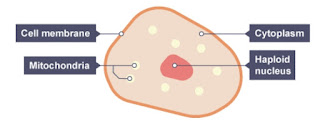Describe how seeds and fruits are suited to their modes of dispersal. (20marks)
Q .Dispersed by wind - Seeds / fruits are light in weight / small in size; to be carried easily away; - Some have wing like structures; to increase surface area for them to remain buoyant / float in the air; - Some have perforations; and hang on a slender stalk; when swayed the seeds are scattered away; Water dispersed -Fruits / seeds have fibrous mesocarp; with a lot of air spaces for buoyancy; - Fruits / seeds have impermeable seed coat / mesocarp to avoid soaking; Animal dispersed - Fruits / seeds have hooks; to stick on to animal body and carried away - Some fruits seeds are freshly; scented; brightly coloured; to attract animals which may carry them away. - Some seeds / fruits have hard / indigestible seed coats; and are released in animal droppings away from parent plants; Self dispersal / explosive mechanism -Some when dry split open along lines of weakness and scatter the seeds away;
